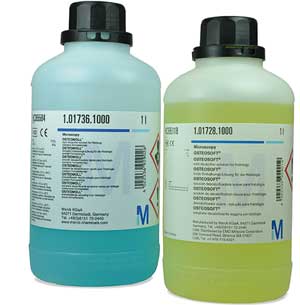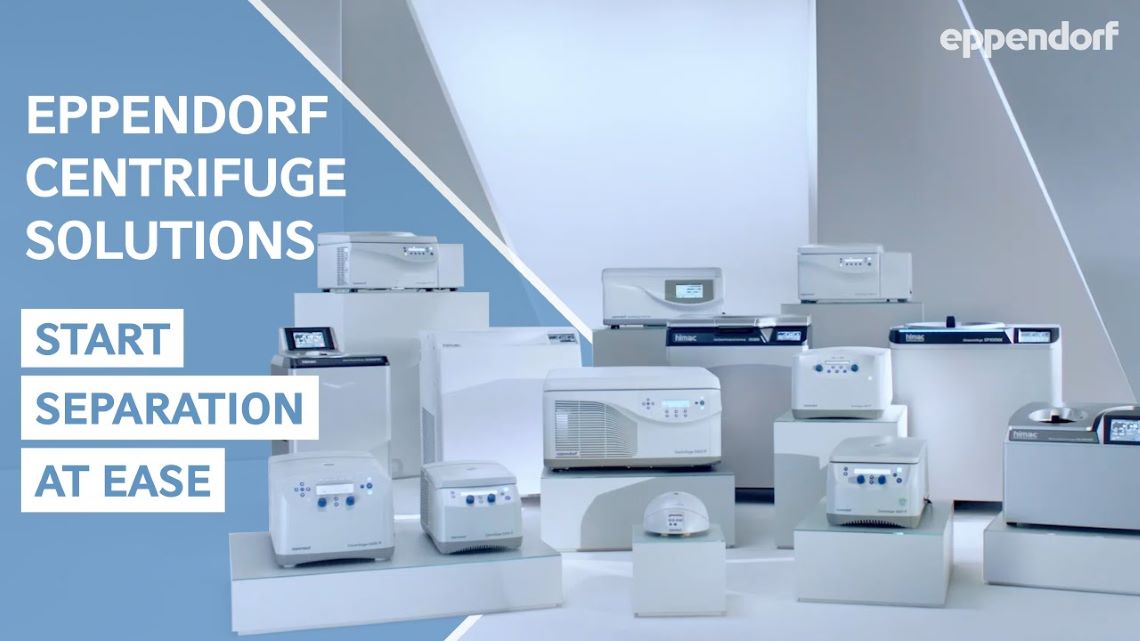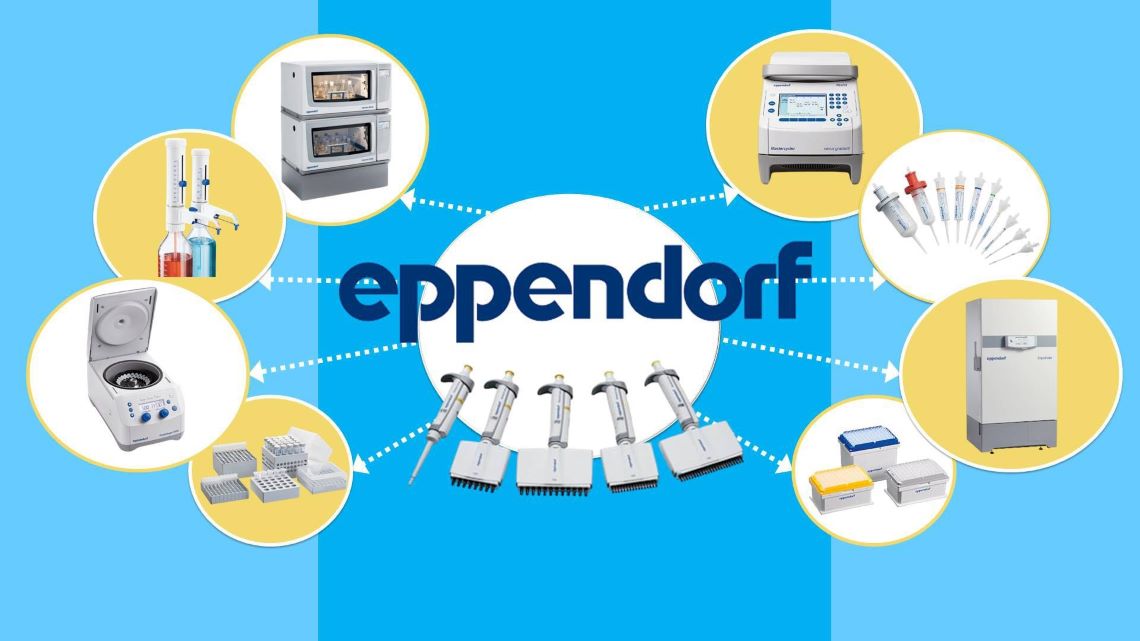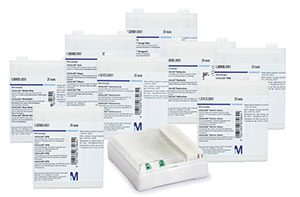A&A reagent Products

Decalcification methods are necessary for optical microscopic examinations of bone and other hard
tissue in routine histological procedures. The material to be decalcified is placed in an excess of
decalcifying solution and demineralized (decalcified) in this. The decalcification time is dependent on
the size and structural density of the hard tissue, while the composition of the decalcifying solution
also exerts a decisive influence on the process. Decalcification of bone and hard tissue requires the use
of either inorganic acids, as is the case with OSTEOMOLL®, which liberates the acids of the mineral
salts and can subsequently be rinsed out.
The decalcifying solution has been stained to facilitate the identification of the decalcifying procedure
– OSTEOMOLL® is blue. The dye used is inert in terms of any effect on the tissue to be decalcified.
When decalcifying sensitive, calcium-containing tissue a solution such as OSTEOSOFT® is used, which
contains complex- or chelate-forming agents that bind the calcium ions of the tissue. This type of
decalcifying solution preserves the antigen structures in the tissue, with the result that immunological
procedures can be conducted. The decalcifying solution has been stained to facilitate the identification
of the decalcifying procedure – OSTEOSOFT® is yellow. The dye used is inert in terms of any effect on
the tissue to be decalcified.




